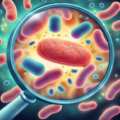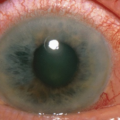A coffee a day keeps the dementia at bay. Actually, it’s 3 to 5 cups of coffee a day – moderate consumption throughout adulthood – that has been shown to prevent the onset of Alzheimer’s disease in later life; “a coffee a day keeps the dementia at bay” just seemed catchier.
Beyond catchiness, some very interesting research reveals that moderate consumption of coffee can help to clear beta amyloid from the brain. (“Beta amyloid denotes peptides of 36–43 amino acids that are crucially involved in Alzheimer’s disease as the main component of the amyloid plaques found in the brains of Alzheimer patients.”)
Building the case that coffee consumption prevents Alzheimer’s, it is noted in “Caffeine Suppresses Amyloid-B Levels in Plasma and Brain of Alzheimer’s Disease Transgenic Mice” that:
Recent longitudinal studies spanning 4–10 years suggest that habitual caffeine/coffee intake protects against cognitive impairment in aging humans. Moreover, an epidemiological study evaluated caffeine intake during the 20 years preceding AD (Alzheimer’s disease) diagnosis and found that AD patients consumed markedly less caffeine during that period compared to age-matched individuals without AD. Collectively, these and other observational human studies suggest that habitual caffeine/coffee intake may protect against memory impairment and AD during aging.
Epidemiological studies are valuable and telling, but they are not controlled and drawing causal conclusions from them is difficult. The next step in the research process would be to see how animals react. In mouse studies, it has been found that regular administration of caffeine to mice that had a genetic predisposition toward Alzheimer’s development (APPsw mice), showed that caffeine prevented Alzheimer’s disease development. Specifically, the researchers found that caffeine “1) protected these mice from otherwise certain cognitive impairment in older age, and 2) limited their brain production of the peptide β-amyloid (Aβ). The moderate amount of caffeine intake given to these APPsw mice (human equivalency of 5 cups of coffee per day) suppressed both β-secretase (BACE1) and γ-secretase/PS1 levels in hippocampus, indicating that caffeine can directly impact AD pathogenesis in these AD mice.”
In another study, “Beneficial effects of caffeine in a transgenic model of Alzheimer’s disease-like tau pathology” published in Neurobiology and Aging in 2014, it was noted that regular caffeine consumption broke up tau deposits, along with beta-amyloid plaques, two of the dominant characteristics of Alzheimer’s affected brains.
Of course, we’re not mice and five cups of coffee seems a bit excessive, but the combination of the epidemiological data and rodent data suggest there might be something to the caffeine – Alzheimer’s connection. Add that to the correlational data with humans showing that people who drink coffee regularly are less likely to develop Alzheimer’s disease and we have strong case for regular consumption of caffeine (especially coffee – other sources of caffeine have been less strongly linked to Alzheimer’s prevention) throughout adulthood in order to prevent Alzheimer’s in later life. The next step is clinical trials in humans and those have been initiated. Until those results are in, we can only postulate a connection.
It should be noted that the anti-Alzheimer’s disease drugs that are currently on the market, cholinesterase inhibitors and NMDA receptor antagonists, show far less efficacy at treating or preventing Alzheimer’s disease than caffeine/coffee. Both cholinesterase inhibitor and NMDA receptor antagonist drugs “have minimal benefits and do not appear to address AD pathogenesis.” Neither cholinesterase inhibitor nor NMDA receptor antagonist drugs reduce tau deposits or beta-amyloid plaques. Caffeine does. Given that caffeine is safe for most people, readily available, inexpensive and has minimal side-effects and that cholinesterase inhibitor and NMDA receptor antagonist drugs have none of those benefits – regular coffee consumption may be an interesting option for treating and preventing Alzheimer’s.
Good job, big pharma. That’s why you’re paid the big bucks – to create drugs that are less effective (and far more dangerous) than a $1 cup of McDonalds coffee.
Resources:
- Journal of Alzheimer’s Disease, “Caffeine suppresses β-amyloid levels in plasma and brain of Alzheimer’s transgenic mice”
- Journal of Alzheimer’s Disease, “Caffeine reverses cognitive impairment and decreases brain amyloid-beta levels in aged Alzheimer’s disease mice.”
- Neurobiology of Aging, “Beneficial effects of caffeine in a transgenic model of Alzheimer’s disease-like tau pathology”
- Journal of Alzheimer’s Disease, “Caffeine as a protective factor in dementia and Alzheimer’s disease.”
- Journal of Alzheimer’s Disease, “Caffeine and Coffee as Therapeutics Against Alzheimer’s Disease”
- Science Daily, “Caffeine against Alzheimer’s disease? Positive effect on tau deposits demonstrated”
About the Author: Lisa Bloomquist was “Floxed” on her 32nd birthday by Cipro, a fluoroquinolone antibiotic. After 2 years of battling the mysterious health ailments that come with an adverse reaction to a fluoroquinolone, she has fought her way back to health. She is now fighting for recognition of the harm that these drugs can cause and hoping to help those who are suffering from them through their fluoroquinolone induced illness to find recovery. Her web site, Floxie Hope, highlights stories of hope and recovery. Mito Madness, also started by Lisa, focuses on the absurdity of ignoring the role of mitochondria in forming disease models.














As with everything, there are individual complexities. The mice studied were genetically predisposed toward having Alzheimer’s disease. Perhaps there are pathways in AD predisposed mice that are not present in non-predisposed humans. It’s entirely possible. Differences in any of these pathways – http://biochemical-pathways.com/#/map/1 – can make one person’s cure another person’s poison.
With that said, I don’t think that there’s any reason to think that the epidemiologists who noted that coffee consuming humans are less likely to have Alzheimer’s disease didn’t take into account the age of the people that they were studying. That should be epidemiology 101. And the studies that I paid most attention to were authored by Dr. Hungington Potter. Here is his CV – http://www.ucdenver.edu/academics/colleges/medicalschool/departments/neurology/Faculty/Documents/PhD_CV2014/CV.Potter.2014.pdf
I suspect that the positive results seen with caffeine consumption have to do with purine metabolism. Purines are metabolized into uric acid which is a potent antioxidant. Uric acid also causes gout. They are neither purely good nor purely bad – and they have many compounding feedback loops in both directions.
Like everything else in life, the story about caffeine needs to be balanced. Six references are given but we do not know anything about the authors, the details of the experiments, or the long-term effects. I learned many years ago from a biochemist that an enzyme that occurs in our cells is used to cut short the action of something called cyclic amp. Caffeine destroys this enzyme. Cyclic amp initiates many biologic functions and by cutting its action short the balance of action is controlled. Cellular action demands energy that is then consumed in function.
It is this consumption of energy that gives the false impression to the consumer that
“I have more energy”. I have learned from many people that they require as much as 2 cups of coffee in the morning to be able to get to work. What they do not realize is that the fatigue that they are treating with caffeine is a result of inefficient energy synthesis in their cells in the first place, the commonest cause being poor diet. They are therefore initiating energy consumption that they can ill afford.
The conclusion from this is that coffee must be taken in association with a good diet to supply the fuel. In many cases this is not true for an enormous amount of coffee is being consumed in association with a high calorie/low vitamin ratio so that energy synthesis does not keep up with its consumption, thus increasing the fatigue. Fatigue is a perception felt in the brain that can roughly be compared with the gas gauge in a car. Since the cause of AD is clearly related to energy metabolism, it is possible that preventive use of caffeine might actually shorten life as it prevents the appearance of the disease, a potentially interesting example of Yin and Yang.